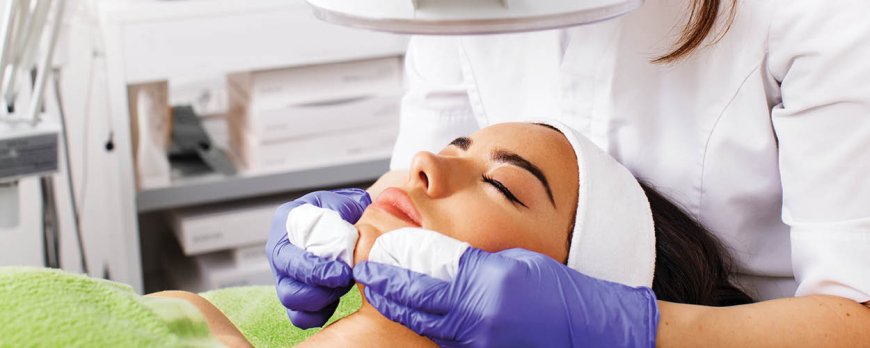What does a cyst look like?
Discover the answer to 'What does a cyst look like?' Uncover the critical signs, variations in appearance, and when to seek expert medical advice.

What does a cyst look like?
When it comes to identifying a cyst, understanding its appearance is crucial. A cyst is a sac-like structure that can contain fluid, air, or other substances. They can appear as lumps on the skin and vary in size, ranging from small pimples to large growths.
Cysts can occur in different parts of the body, including the skin, breasts, kidneys, ovaries, and brain. The appearance of a cyst depends on its type and location. Common types of cysts include epidermoid cysts, sebaceous cysts, breast cysts, ganglion cysts, and ovarian cysts.
Cysts can be benign or cancerous, and the treatment options depend on the type and symptoms of the cyst. It is important for individuals to seek medical advice if they notice a new lump or are concerned about a cyst.
Key Takeaways:
- A cyst is a sac-like structure that contains fluid, air, or other substances.
- Cysts can appear as lumps on the skin and vary in size.
- They can occur in different parts of the body, including the skin, breasts, kidneys, ovaries, and brain.
- Common types of cysts include epidermoid cysts, sebaceous cysts, breast cysts, ganglion cysts, and ovarian cysts.
- Cysts can be benign or cancerous, and medical advice should be sought for proper evaluation and treatment.
Different Types of Cysts and Their Characteristics
Cysts can manifest in different forms depending on the type and location. These sac-like structures can contain fluid, air, or other substances. Understanding the characteristics of various cysts can help in their identification and proper management.
1. Epidermoid Cysts
Epidermoid cysts are commonly found on the skin and are typically small, round, and firm to the touch. They are often filled with a cheesy, waxy substance and have a white or yellowish appearance. These cysts develop when skin cells grow beneath the surface instead of shedding naturally, leading to the formation of a closed sac.
2. Sebaceous Cysts
Sebaceous cysts, also known as epidermal inclusion cysts, arise from blocked hair follicles or oil glands. They can occur on the face, neck, scalp, or back. These cysts usually have a dome-shaped appearance and contain a thick, yellowish material called sebum. Sebaceous cysts are generally non-painful unless they become infected or inflamed.
3. Breast Cysts
Breast cysts are fluid-filled sacs that can develop in the breast tissue. They often feel like round or oval lumps and can vary in size. Breast cysts can be smooth or firm, and their texture may change during the menstrual cycle. These cysts are typically benign, but if they cause discomfort or appear suspicious, further evaluation is necessary to rule out any underlying issues.
4. Ganglion Cysts
Ganglion cysts most commonly affect the wrists and hands, appearing as soft, round lumps. They are filled with a thick, gel-like fluid and can range in size. These cysts arise from the tissues around joints or tendons and may be associated with pain or restricted movement. Sometimes, ganglion cysts can disappear on their own, but medical intervention may be required if they cause persistent symptoms.
5. Ovarian Cysts
Ovarian cysts occur within the ovaries and can have various appearances, depending on their type. They can be solid or fluid-filled and may present as small growths or larger masses. Ovarian cysts can be associated with abdominal discomfort, irregular menstrual cycles, or hormonal disturbances. It is important to monitor and evaluate ovarian cysts, as some may require surgical intervention or further investigation.
It is important to note that cysts should be evaluated by a healthcare professional to determine the appropriate course of action. Seek medical advice if you notice any new lumps or have concerns about a cyst.
Skin Cysts: Identifying Epidermoid and Sebaceous Cysts
Skin cysts, including epidermoid and sebaceous cysts, can be identified by their distinct visual characteristics. These common types of cysts often appear as raised bumps on the skin. Epidermoid cysts, also known as epidermal cysts, are usually small, round, and firm. They can range in size from a few millimeters to a few centimeters. Epidermoid cysts may have a central punctum or tiny opening where the trapped keratin, a protein found in skin cells, can be seen.
Sebaceous cysts, on the other hand, are typically larger and softer than epidermoid cysts. They are often filled with a thick, oily substance called sebum. Sebaceous cysts may have a yellowish tint and can sometimes have a small opening in the center. Both types of cysts can be painless, but they may become inflamed, tender, or infected if they rupture or are irritated.
Common Symptoms of Skin Cysts:
- A visible lump or bump on the skin
- Smooth, round, or oval shape
- Varied in size, ranging from small to large
- Possible central punctum or opening in epidermoid cysts
- Possible thick, oily substance in sebaceous cysts
- Pain, tenderness, or redness if inflamed or infected
If you notice a new lump on your skin or have concerns about a cyst, it is essential to seek medical advice. A healthcare professional can evaluate the cyst's appearance, location, and symptoms to determine the appropriate course of action. Treatment options may include monitoring the cyst, draining the cyst's contents, or, in some cases, removing the cyst surgically.

Breast Cysts: Recognizing Appearance and Symptoms
Breast cysts can vary in appearance and may present with specific signs that distinguish them from other breast abnormalities. These fluid-filled sacs often feel like round or oval lumps, typically smooth and movable. They can range in size from small, pea-sized cysts to larger growths.
The visual appearance of breast cysts may include a palpable lump that feels soft or tender to the touch. Some women may experience breast swelling or changes in breast size due to the presence of a cyst. It's important to note that breast cysts can be accompanied by symptoms such as breast pain or discomfort, especially before or during menstruation.
Symptoms of Breast Cysts:
- Round or oval lump that feels smooth and movable
- Tenderness or pain in the breast
- Swelling or changes in breast size
- Increased discomfort before or during menstruation
While breast cysts are usually noncancerous (benign), it's important to consult a healthcare professional for an accurate diagnosis. Additional tests or imaging may be recommended to confirm the nature of the lump and rule out any other breast abnormalities. Regular breast self-examination and routine mammograms can assist in early detection of breast cysts and other breast conditions.
If you notice a new lump in your breast or have concerns about a cyst, it is always best to seek medical advice. Your healthcare provider can evaluate your symptoms, perform a thorough examination, and provide appropriate guidance and treatment options based on your individual situation.
Kidney Cysts: Visual Representation and Potential Impact
Kidney cysts, visually represented as fluid-filled sacs, can vary in size and may affect the normal functioning of the kidneys. These cysts can develop in one or both kidneys and are typically noncancerous. While many kidney cysts are small and do not cause any symptoms, larger cysts or multiple cysts can lead to complications.
Here are some key points about kidney cysts:
- Kidney cysts can be diagnosed through imaging tests like ultrasounds or CT scans, which can provide a visual representation of the cysts.
- The size of kidney cysts can range from small, barely noticeable lumps to large cysts that can potentially cause discomfort or pain.
- Common symptoms associated with kidney cysts include back or abdominal pain, high blood pressure, urinary tract infections, and blood in the urine.
- In some cases, kidney cysts may lead to complications such as cyst infection, bleeding, or obstruction of urine flow.
If you suspect you have a kidney cyst or are experiencing any symptoms related to kidney cysts, it is important to seek medical advice. A healthcare professional can provide a proper diagnosis and recommend the appropriate treatment plan based on the size, location, and potential impact of the cysts.
Ovarian Cysts
Ovarian cysts can be visually described as fluid-filled sacs and may present with specific signs and symptoms. These cysts develop within or on the surface of the ovaries, which are part of the female reproductive system. While most ovarian cysts are harmless and resolve on their own, some may cause discomfort or require medical intervention.
When it comes to appearance, ovarian cysts can vary in size and shape. They may appear as small, fluid-filled bubbles or larger, solid masses. In some cases, ovarian cysts may have a smooth, rounded contour, while others may have irregular edges. The color of the cyst may also vary, ranging from clear or translucent to a darker shade.
In terms of symptoms, ovarian cysts can cause pelvic pain, bloating, and a feeling of fullness. Some individuals may experience changes in their menstrual cycle, including irregular periods or heavy bleeding. If a cyst ruptures or twists, it can lead to sudden, severe abdominal pain and may require immediate medical attention.
Signs and Symptoms of Ovarian Cysts:
- Pelvic pain or discomfort
- Bloating or abdominal swelling
- Changes in menstrual cycle
- Difficulty emptying the bladder
- Urinary urgency or frequency
- Pain during sexual intercourse
- Unexplained weight gain
- Nausea or vomiting
If you suspect you may have an ovarian cyst or are experiencing any of the symptoms mentioned above, it is important to consult a healthcare professional for an accurate diagnosis. They can perform a physical examination, order diagnostic tests such as ultrasound or MRI, and recommend appropriate treatment options based on the type and severity of the cyst.
Brain Cysts: Identifying Their Distinct Characteristics
Brain cysts, though not always visually apparent, can have distinct characteristics that can be identified through medical imaging. These sac-like structures can form within the brain tissue, and they may contain fluid or other substances. While some brain cysts may be asymptomatic and go unnoticed, others can cause symptoms and potentially affect neurological health.
When brain cysts are large or located in critical areas of the brain, they can lead to symptoms such as headaches, seizures, and neurological deficits. However, identifying these cysts visually can be challenging without proper medical imaging techniques. Magnetic resonance imaging (MRI) is commonly used to visualize brain cysts and determine their size, location, and other relevant characteristics.
It's important to note that brain cysts can vary in nature and composition. Some common types of brain cysts include arachnoid cysts, pineal cysts, and colloid cysts. Each type may have specific features and potential implications for a person's health. Medical professionals evaluate the visual representation of brain cysts along with a person's medical history and symptoms to provide an accurate diagnosis and recommend appropriate treatment or monitoring.
Benign vs. Cancerous Cysts
It's vital to differentiate between benign and cancerous cysts, as their features and associated risks can vary significantly. Benign cysts are non-cancerous and often harmless, while cancerous cysts can indicate the presence of malignant tumors. Understanding the characteristics of each type is crucial for proper diagnosis and treatment.
- Benign Cysts: These cysts typically have well-defined edges and are often filled with fluid or a semi-solid substance. They tend to grow slowly and are usually painless. Benign cysts are commonly found in various parts of the body, including the skin, breasts, ovaries, and kidneys. Although they are generally harmless, they may cause discomfort or affect nearby tissues if they become large.
- Cancerous Cysts: Unlike benign cysts, cancerous cysts are often irregular in shape and may have an irregular growth pattern. They may contain solid masses or abnormal tissue. Cancerous cysts can be more aggressive and may invade nearby tissues or spread to other parts of the body. It's important to note that not all cysts are cancerous, but any new or unusual growth should be evaluated by a medical professional.
Signs and Symptoms:
While both benign and cancerous cysts can present as lumps, there are certain signs and symptoms that may indicate a higher likelihood of malignancy. These can include rapid growth, changes in shape or appearance, presence of pain or tenderness, and persistent swelling. However, it's crucial to remember that only a medical evaluation can confirm the nature of a cyst.
If you notice a new lump or are concerned about a cyst, it's important to seek expert medical advice. A healthcare professional will perform a thorough examination, which may include imaging tests or a biopsy, to determine the nature and potential risks associated with the cyst. Early detection and accurate diagnosis are key in ensuring appropriate treatment and optimal outcomes.

When to Seek Medical Advice
It is important to consult with a healthcare professional if you notice any new lump or are concerned about the appearance of a cyst. While some cysts may be harmless, others can indicate an underlying medical condition that requires attention. Seeking expert medical advice ensures proper diagnosis and appropriate treatment, if necessary.
Some key signs that you should seek medical advice include:
- A sudden increase in the size or growth of a cyst
- Pain or discomfort associated with the cyst
- Changes in the color or texture of the cyst
- Difficulty performing daily activities due to the presence of a cyst
- Any other concerning symptoms such as fever or infection
Your healthcare provider will conduct a thorough evaluation, which may include physical examination, imaging tests, or laboratory tests, depending on the location and characteristics of the cyst. They will be able to determine the nature of the cyst, whether it is benign or potentially cancerous, and recommend the most appropriate course of action.
Remember, it is always better to err on the side of caution when it comes to your health. Seeking medical advice promptly ensures early detection, timely treatment, and peace of mind.
Treatment Options for Cysts
Treatment options for cysts primarily depend on the type of cyst and the symptoms experienced by the individual. It's important to note that not all cysts require immediate medical intervention, and some may even resolve on their own over time. However, if a cyst is causing pain, discomfort, or interfering with daily activities, treatment may be necessary.
Non-Invasive Approaches:
- Watchful Waiting: In many cases, especially for small cysts that are not causing any symptoms, doctors may recommend a wait-and-see approach. They will monitor the cyst's size and any changes in symptoms over time before deciding on further treatment.
- Medication: Certain cysts, such as those associated with hormonal imbalances or infections, can be managed with medication. Hormonal therapies may be prescribed to regulate menstrual cycles and prevent ovarian cysts, while antibiotics can help treat infected cysts.
Invasive Procedures:
- Aspiration: This procedure involves using a needle to drain the fluid or pus from the cyst, providing immediate relief from pain or pressure. Aspiration is often performed for cysts that recur or become enlarged.
- Excision: In cases where a cyst is large, causing significant discomfort, or suspected to be cancerous, surgical removal may be recommended. The entire cyst, including its capsule, is carefully excised to prevent recurrence.
- Laparoscopy: For cysts located deep within the body, laparoscopic surgery may be performed. This minimally invasive procedure uses small incisions and a camera-guided instrument to access and remove the cyst.
It's crucial to remember that treatment options should be discussed with a healthcare professional, as they will consider the individual's medical history, overall health, and specific circumstances before recommending the most appropriate course of action. Timely intervention can help alleviate symptoms, prevent complications, and ensure the best possible outcome for individuals affected by cysts.

Conclusion
Understanding the visual characteristics of cysts can play a crucial role in early detection and seeking appropriate medical attention. A cyst is a sac-like structure that contains fluid, air, or other substances. They can appear as a lump on the skin and vary in size, from small pimples to large growths. Cysts can occur in different parts of the body, such as the skin, breasts, kidneys, ovaries, and brain.
The appearance of a cyst depends on its type and location. Common types of cysts include epidermoid cysts, sebaceous cysts, breast cysts, ganglion cysts, and ovarian cysts. Each type has unique characteristics that distinguish them visually. For example, epidermoid cysts generally have a yellowish or whitish appearance, whereas sebaceous cysts are often filled with a thick, cheesy material.
Cysts can be benign or cancerous. Benign cysts are typically harmless and do not pose a major health risk. However, cancerous cysts require immediate medical attention and intervention. It is essential to consult a healthcare professional if you notice a new lump or have concerns about a cyst. A medical evaluation can determine the nature of the cyst and ensure appropriate treatment.
Treatment options for cysts vary depending on the type and symptoms. In some cases, a doctor may recommend monitoring the cyst and taking a wait-and-see approach. Other times, surgical removal may be necessary, especially if the cyst is causing pain, discomfort, or interfering with normal organ function. Seeking expert medical advice is crucial to determine the most suitable course of action for each individual case.
In conclusion, recognizing the appearance of cysts is vital for early detection and proper medical intervention. Whether it is a skin, breast, kidney, ovarian, or brain cyst, understanding their visual characteristics helps individuals seek appropriate medical attention promptly. If you notice any abnormalities or have concerns about a cyst, do not hesitate to consult a medical professional for further evaluation and guidance.
FAQ
What does a cyst look like?
A cyst is a sac-like structure that can appear as a lump on the skin. They vary in size and can contain fluid, air, or other substances.
What are the different types of cysts and their characteristics?
Common types of cysts include epidermoid cysts, sebaceous cysts, breast cysts, ganglion cysts, and ovarian cysts. Each type has its own specific characteristics.
What do skin cysts look like?
Skin cysts, such as epidermoid and sebaceous cysts, typically appear as small, round lumps underneath the skin. They may be flesh-colored or have a yellowish tint.
How do breast cysts look?
Breast cysts usually appear as fluid-filled lumps in the breast tissue. They may feel smooth, firm, or rubbery to the touch.
What do kidney cysts look like?
Kidney cysts can vary in appearance. Some may be small and difficult to detect, while others can grow larger and form sacs filled with fluid. Imaging tests are typically used to visualize kidney cysts.
How do ovarian cysts look?
Ovarian cysts can appear as small or large growths in the ovaries. They may be fluid-filled and have a smooth or bumpy texture.
What do brain cysts look like?
Brain cysts can have various appearances depending on their location and size. They may be seen as fluid-filled sacs on imaging tests, such as MRI or CT scans.
What is the difference between benign and cancerous cysts?
Benign cysts are non-cancerous and typically do not pose a serious health threat. Cancerous cysts, on the other hand, may require immediate medical attention and treatment.
When should I seek medical advice for a cyst?
It is advisable to seek medical advice if you notice a new lump or are concerned about a cyst. A healthcare professional can evaluate the cyst and determine the appropriate course of action.
What are the treatment options for cysts?
The treatment options for cysts vary depending on the type and symptoms. They may include observation, drainage, surgical removal, or medication, and should be determined by a healthcare professional.





























































































































